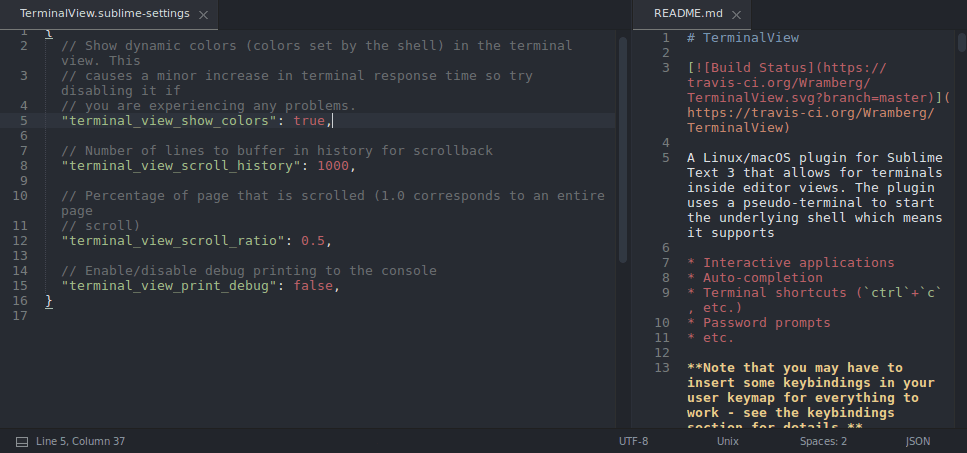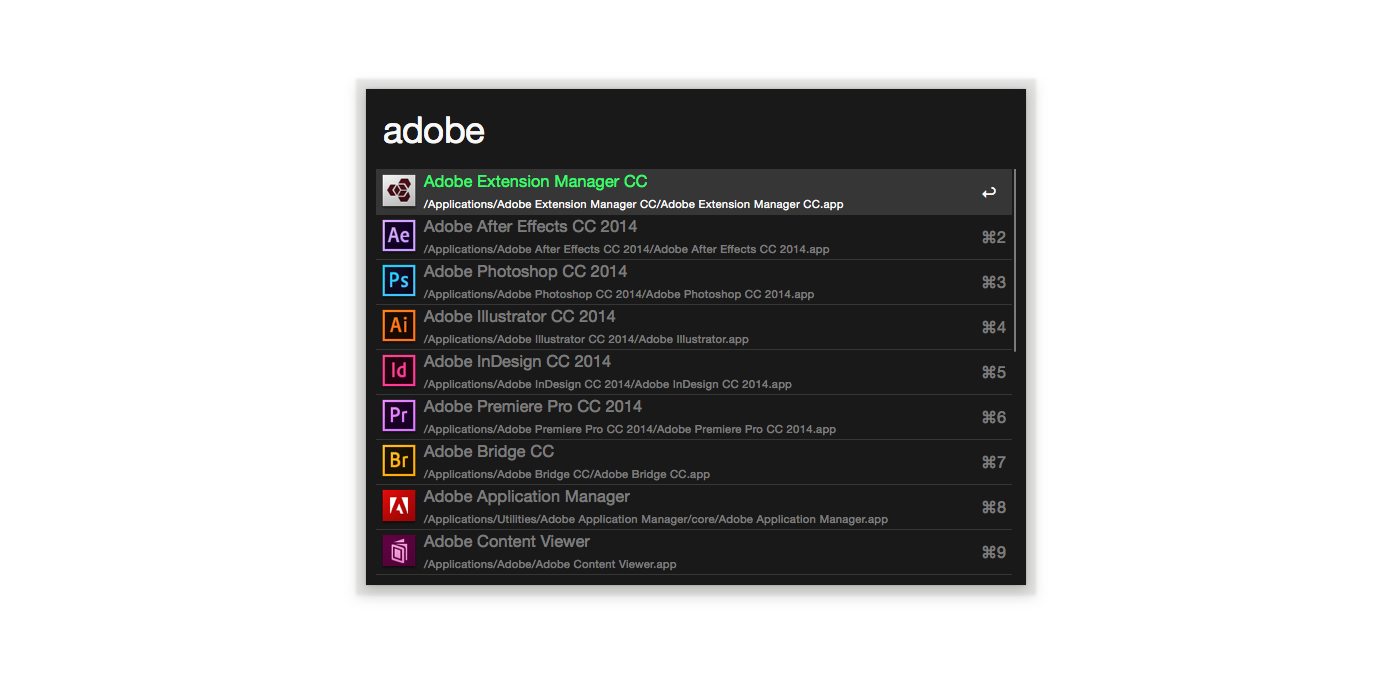Using this approach (the ppa one) to install Sublime Text would allow you to open it from the terminal using subl or sublime-text without the need of additional configuration. Improve this answer. Follow edited Apr 13 '17 at 12:25. You can make a build system to Run python code in the terminal where you can give input to the program from STDIN. This is the build system I have created for sublime text 3. Go to Tools-Build System. Terminus is heavily inspired by TerminalView another Sublime Text package that adds a terminal to a view. What I love about Terminus is you can add a toggleable panel or a view. Sublime Text includes a command line tool, subl, to work with files on the command line. This can be used to open files and projects in Sublime Text, as well working as. The terminal is so useful when you use Python or Javascript ecc. Sublime text is my favourite text editor. Wouldn’t it be great if we could use the cmd from sublime text with the click of a button, having it opened on the directory of the file we’re working on sublime? It could make our daily life a loto easier.
As I’m working in the OSX Terminal more and more these days, I'm always on the lookout for time saving shortcuts.
A really useful tip that I picked up recently from Zander Martineau is how to open up Sublime Text straight from the Terminal. This is done by hooking into a CLI utility that Sublime provides called subl.
The following instructions are based largely on the original gist on Github by Artero, so credit for this solution should be directed to them and not myself.
It’s a slightly different installation depending on whether you’re using Sublime Text 2 or 3, so I’ll split the two out below in the installaton; simply refer to the instructions that are relevant to you.
Installation
Assuming you installed Sublime in the Applications folder, the following command should open up the editor when you type it into the Terminal:
For Sublime Text 2:

open /Applications/Sublime Text 2.app/Contents/SharedSupport/bin/subl
For Sublime Text 3:
open /Applications/Sublime Text.app/Contents/SharedSupport/bin/subl
If that worked, you're good to go.
You now need to create a symlink called sublime which links the subl CLI to a folder where your system usually looks to execute these binaries. To do this, type in:
For Sublime Text 2:
ln -s /Applications/Sublime Text 2.app/Contents/SharedSupport/bin/subl /usr/local/bin/sublime
For Sublime Text 3:
How To Get Terminal In Sublime
ln -s '/Applications/Sublime Text.app/Contents/SharedSupport/bin/subl' /usr/local/bin/sublime
Check your profile
The final thing you need to do, is to check that your system profile is looking in the right place to see the symlink you have just created.
Enter the following command into your Terminal:

open ~/.bash_profile
Note that in some cases the profile may be called ~/.profile.
This should open up your profile in a text editor. What you’re looking for is a line towards the top of the file that starts with export PATH=. Your PATH contains all the directories that will be checked for executable binaries when you type a command into your Terminal. Since we created a symlink in the /usr/local/bin folder, we want to make sure that that folder is being checked too.
Hopefully, you’ll be able to see something similar to this:
export PATH=/usr/local/bin:(...)
If not, simply add this folder to your PATH and save the file.
Note: The (...) in this example represents other folders that would be listed on the same line and separated by a colon.
If you don't already have a PATH set in your bash_profile you can type the following on a new line:
export PATH=/usr/local/bin:$PATH
Finally, if you did have to add /usr/local/bin to your PATH, run the following command before continuing:
source ~/.bash_profile
This will reload your .bash_profile with the newly added directory in your PATH.
Test it works!
In your Terminal, the following commands should now work:
sublime .– opens the current directory in Sublimesublime filename– opens a file wherefilenameis the file to be openedsublime foldername– opens a folder wherefoldernameis the folder to be opened
And there you have it – you can now open any file or folder in Sublime straight from the Terminal.
Thanks and credit for this great solution again goes to Artero. If you have any problems getting it working, let me know and I’ll do my best to help you out.
Article posted on the 17th February 2014
Setup
Some operating systems and installation methods will require a configuration change to make subl available on the PATH.
Windows
On Windows, the command line helper is subl.exe. To use this from the Command Prompt or Powershell, the Sublime Text installation folder needs to be added to the Path environment variable:
Windows 10
Show instructions for: Windows 8, Windows 7- Open the Start Menu and type environ
- Select the item Edit the system environment variables
- Click the button Environment Variables at the bottom of the System Properties dialog
- Select, or create, the
Pathenvironment variable in the appropriate section:- For the current user, select
Pathin the User variables for {username} section - For all users, select
Pathin the System variables section
- For the current user, select
- Click the New button and add an entry with the Sublime Text installation directory
- 64bit installs are typically in C:Program FilesSublime Text
- 32bit installs on a 64bit version of Windows will be in C:Program Files (x86)Sublime Text
- 32bit installs on a 32bit version of Windows will be in C:Program FilesSublime Text
Terminal In Sublime Text Github
Windows 8
Show instructions for: Windows 10, Windows 7- Press the Windows Key and type environ
- Select the item Edit the system environment variables
- Click the button Environment Variables at the bottom of the System Properties dialog
- Select, or create, the
Pathenvironment variable in the appropriate section:- For the current user, select
Pathin the User variables for {username} section - For all users, select
Pathin the System variables section
- For the current user, select
- In the Variable value input, add an entry with the Sublime Text installation directory. If there is an existing value, add a
;before the Sublime Text directory.- 64bit installs are typically in C:Program FilesSublime Text
- 32bit installs on a 64bit version of Windows will be in C:Program Files (x86)Sublime Text
- 32bit installs on a 32bit version of Windows will be in C:Program FilesSublime Text
Windows 7
Show instructions for: Windows 10, Windows 8- Open the Start Menu
- Right-click on Computer and select Properties
- Click on Advanced System Settings in the left-hand sidebar
- Click the button Environment Variables at the bottom of the System Properties dialog
- Select, or create, the
Pathenvironment variable in the appropriate section:- For the current user, select
Pathin the User variables for {username} section - For all users, select
Pathin the System variables section
- For the current user, select
- In the Variable value input, add an entry with the Sublime Text installation directory. If there is an existing value, add a
;before the Sublime Text directory.- 64bit installs are typically in C:Program FilesSublime Text
- 32bit installs on a 64bit version of Windows will be in C:Program Files (x86)Sublime Text
- 32bit installs on a 32bit version of Windows will be in C:Program FilesSublime Text
Mac
Sublime Hide Menu
To use subl, the Sublime Text bin folder needs to be added to the path. For a typical installation of Sublime Text, this will be located at /Applications/Sublime Text.app/Contents/SharedSupport/bin.
Bash
If using Bash, the default before macOS 10.15, the following command will add the bin folder to the PATH environment variable:
Zsh

If using Zsh, the default starting with macOS 10.15, the following command will add the bin folder to the PATH environment variable:
Linux
If Sublime Text is installed via one of the Linux Package Manager Repositories or a package, a subl symlink will automatically be installed into the /usr/bin/ directory.
If installing from a tarball, the sublime_text executable should be symlinked to subl, with a command such as:
The exact details of the symlink command will depend on the installation location. Most default PATH environment variable values should contain /usr/local/bin, so no further commands should be necessary.
